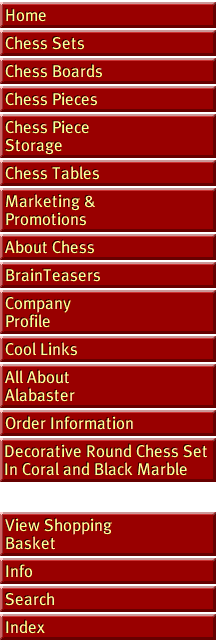 |  | 
 |  |  |  | 

Click the picture for a condensed history of Chess! |  | 

Click the picture to learn more about Chess! |  |  |  |  |  | 

Excerpted from his famous "Chess and Checkers - The Way to Mastership". |  | 

A nice-to-find website for unique chess sets. |  |
We will be happy to take your order personally, or answer any questions you may have. Contact us at
1-877-658-9879
Email:
contact@luxurychess.com
|
|

